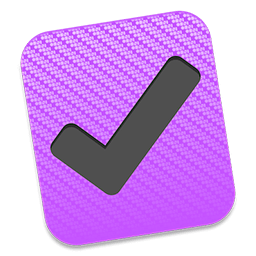

A Shopping List project is a good example of a Single Action list because it contains a list of things that you need to pick up at the grocery store. The final project type, Single Actions, isn’t really a project-it’s a list of loosely-related actions that aren’t interdependent. If you find yourself using one type more often than the other, you can change the default setting in OmniFocus ▸ Preferences ▸ Organization. These icons allow you to quickly scan a list of projects and tell which project is which type. When viewing the Projects perspective, each project has an icon to its left that indicates the project type. (Actions beyond the first available action in a sequential project are blocked, and therefore hidden.) In other View settings the distinction is there, but more subtle: future actions in a sequential project have their titles in gray text instead of black. The difference between parallel and sequential projects is most visible when the View option is set to show only Available actions. In a parallel project, all incomplete actions are available, and the First Available is just the first one in the list. Parallel projects consist of actions that can be completed in any order, such as picking up items at a few different locations. Each item in the list is dependent on the previous item’s completion. Another example of a sequential project could be a checklist that an astronaut goes through during the launch sequence. Sequential projects have actions that need to be completed in a predetermined order the first item needs to be completed before you can move on to the next. Some projects, such as building a papier-mâché pterodactyl, require one action to be completed before the next action starts. Projects can be as elaborate as necessary, and you can specify the project type to be either Sequential, Parallel, or as a logical grouping of Single Actions. Projects are typically more complex than actions, and can include several related actions. Projects to the rescue!Ī Project is an item that’s made up of multiple actions. Planning a vacation or move, for example, are the sort of things that could benefit from being broken down into more manageable parts. The tasks in the Inbox can be processed using the forEach(…) function called on the resulting array of task object references returned as the value of the inbox property.As you work through your Inbox, some of the items will stand out as larger in scope than a simple action.Tasks can be identified by the value of their name property, and an object reference to specified Inbox task can be generated using the taskNamed("Title of Task to Find") function called on the inbox property.object references and property records are used to represent objects and to display a list of their properties and corresponding values.
#Omnifocus 2 tutorial how to

How to create, reference, and manipulate tasks. The Inbox contains your tasks ready to assigned, processed, and organized.


 0 kommentar(er)
0 kommentar(er)
